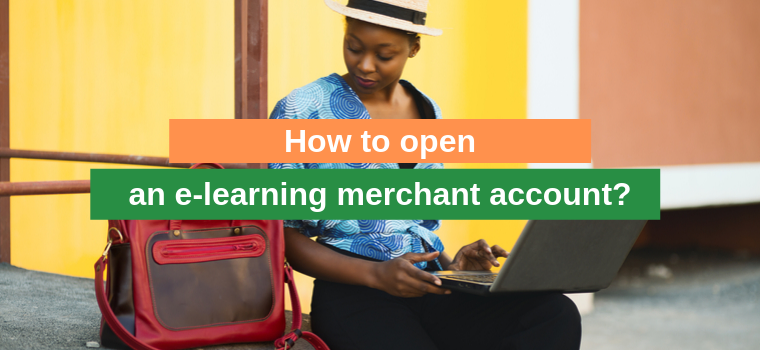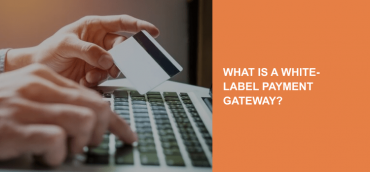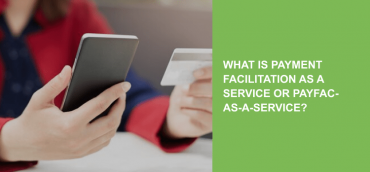Monetizing online content is a bottom line to any e-learning business success. To start receiving payments from selling courses, merchants need to select a payment gateway. In this article, we lay out how to choose the right payment gateway and how to open a merchant account for the e-learning business.
E-learning trends in 2019
E-learning is a system based on formalized teaching with the help of electronic resources. Nowadays, it offers the ability to share educational materials in all kinds of formats — for example, videos, slideshows, word documents, webinars, and PDFs. According to the Global Market Insights research, the e-learning market is to surpass $300B by 2025. The time is ripe for both large and small businesses. Check up the examples of the most successful e-learning platforms in 2019:
- Skillshare;
- Udemy;
- Treehouse;
- LinkedIn Learning;
- Coursera.
What is a payment gateway and why do you need one to sell courses online?
A payment gateway is a software that allows merchants to accept payments from their clients online. To get a payment gateway, one contacts a PSP and applies for a merchant account. When the application is approved, the businessman gets a payment gateway and starts accepting payments online.
Key points to consider when choosing a payment gateway:
There are some essential points one should take a good note of when choosing a payment gateway for e-commerce business:
1. The wide range of payment methods.
Bear in mind the acceptance policy when researching potential payment gateways. The more payment methods PSP has, the more likely you are to succeed. To choose your perfect payment package, answer the next questions:
- What countries are you targeting?
- Would you like to accept payments by e-wallets or just credit cards?
- What additional payment methods besides Visa and MasterCards are you willing to add?
2. Fee structure.
From 1.2% to 4.4% per transaction, all the PSPs have a different fee structure. Take a look at this precise comparison of popular PSPs’ fees to see what fits your business needs best.
- PayPal. A fee of 2.9% + $0.30 for the U.S. online payments and a fee of 4.4% + a fixed fee based on the currency for the international online payments.
- Ikajo International. Fees starting at 1.2%
- Stripe. A fee of 2.9% + $0.30 for the U.S. online payments and a fee of 1% +2.9% + a fixed fee based on currency for the international online payments.
- Braintree. A fee of 1,9% + $0.30.
- Authorize.net. A fee of 2.9%+$0.30.
As you can see from the data above, Ikajo International offers the most affordable services, whereas PayPal is the most expensive solution. See the article on the top 5 payment providers comparison to learn more.
3. Affordable recurring billing.
Recurring billing is a so-called subscription billing model. Offering one is a must for those who opt to sell e-learning. Once the cardholder agrees on price and conditions, the payment will be charged monthly without a second agreement. At Ikajo, we offer a free recurring billing, whereas an average price ranges from $15 to $90 per month.
4. Geo-preferences.
The North America eLearning market accounted for around 40% of the industry share and is snowballing due to fast-technological adoption. That means you don’t want to miss the U.S. clients. The most popular payment methods in the U.S. are Visa, MasterCard, Discover, American Express.
Top 5 payment gateways for e-learning merchants
E-learning merchants have specific business needs. First, an average check amount for the niche is rather low than high. It means that e-learning merchants benefit more from a fixed percentage than a fixed fee per transaction. Secondly, such a business type requires recurring billing. Different PSPs offer different fees and charge a variable amount for recurring payments. The ability to pay via mobile, as well as an integrated payment page, define the e-learning business success as well. To help you, we compiled five payment gateways for e-learning merchants:
1. PayPal. First and foremost, PayPal is beneficial for the U.S. market. The company charges 2.8% +30 cents per transaction inside the U.S.A. However, it costs 4.4% + a fixed fee based on the currency for international online payments. Thus, despite functioning in 150+ countries, it is not beneficial for sellers aiming to sell globally. The price for recurring billing is $10 per month. PayPal also supports mobile banking, e-Wallets, and offers an integrated payment page.
2. Ikajo International. Ikajo functions in 150+ countries, but unlikely PayPal, offers low fees, starting at 1.2% per transaction. No flat fee required. The company provides both hosted and integrated payment pages. It also provides recurring billing for free and is known for its high-security standards. Up to 91% of the company’s disputes were resolved to the merchant’s favor in 2018. From credit cards to crypto to mobile banking, this PSP offers a broad range of payment methods. The company is less known if comparing to Stripe and PayPal, which somehow affects its brand-awareness rate.
3. Stripe. Stripe is a better option for those who want to penetrate the global market. The provider charges a fee of 2.9% + $.030 for the U.S. online payments, while international transactions will cost you just a 1% +2.9% + a fixed fee based on currency. The price for recurring billing, though, is not quite attractive – $39.95 for a plugin. Stripe functions in 25 countries, supports a wide range of alternative payment methods, and has high brand awareness.
4. Braintree. The Braintree per-transaction fee is 2,9% + $.030. The price is average what makes one think that a PSP is a good choice for the global merchants. However, the expensive recurring billing ( $15-$65 per month) and a limited choice of payment methods decrease its authority. The company functions in 28 countries, supports mobile banking, and allows clients to pay inside your website. All in all, Braintree can be trusted.
5. Authorize.net. Last but not least, Authorize.net is a secure and popular payment option. The company charges 2.9%+$.30 and offers a $25 recurring billing. The company also requires a $25 additional monthly fee. Hence, Authorize.net is pricy, if comparing to Ikajo and Stripe. It offers nine payment methods, functions in 5 countries, and only works with low-risk businesses. It can be considered for the E-learning business, though, not the most beneficial from the lost.
What is an e-learning merchant account?
Merchant account (M.A.) is a functional account that enables the client’s business to obtain different kinds of payments such as credit/ debit cards as well as electronic payments. See the article on What is the difference between a payment gateway, payment processor, and a merchant account. Once you apply for a merchant account and your application is being approved, you start selling courses online.
List of documents needed to open an e-learning merchant account:
- Certificate of Incorporation;
- Local documents as per company jurisdiction which displays company directors and owners;
- Utility bill/Bank statement/Rental agreement under corporate names proving company location;
- Valid ID copies for all company directors and owners.
What alternative payment methods benefit the e-learning business?
Given the nature of the e-learning business, using alternative payment methods (APMs) is soon to become vital. From crypto to mobile banking, the alternative payment methods (APMs) are the mainstream you don’t want to miss. The majority of consumers purchasing courses online belong to gen Z and millennials. These young adults prefer to pay via phone. Also, they are now actively merging into the bitcoin payments. Take a look at the list of alternative payment methods that benefit the e-learning business:
- Mobile payments. From ordering tacos to paying for online courses, millennials love mobile banking. Make sure that the PSP of your choice supports mobile banking apps like Apple Pay, Google Pay, Venmo, and Zelle. In case you want to sell courses inside the mobile app, familiarize yourself with in-app payments.
- Cryptocurrency. Do not underestimate crypto. As for today, There are 1.3 million to 15 million cryptocurrency users globally, and the urge is expected to increase moving forward. Except for bitcoin, there are altcoins and tokens.
- E-Wallets. Given its popularity growth, e-wallets should be added to your APMs list. They allow consumers to process payments quickly and hassle-free. The only disadvantage of e-wallets is redirection. One has to leave your website to accomplish a payment inside the e-wallet account. However, it is not critical. Think of adding Paytm, Mobikwik, Alipay, American Express, Apple pay, Microsoft Wallet, and Samsung Pay. These options are the most popular today.
All in all, payment processing for the e-learning business is not as hard as it seems. Find the right payment gateway, apply for a merchant account, and consider the fintech trends when offering payment options. Once you collect all the documents, nothing prevents you from business success.









